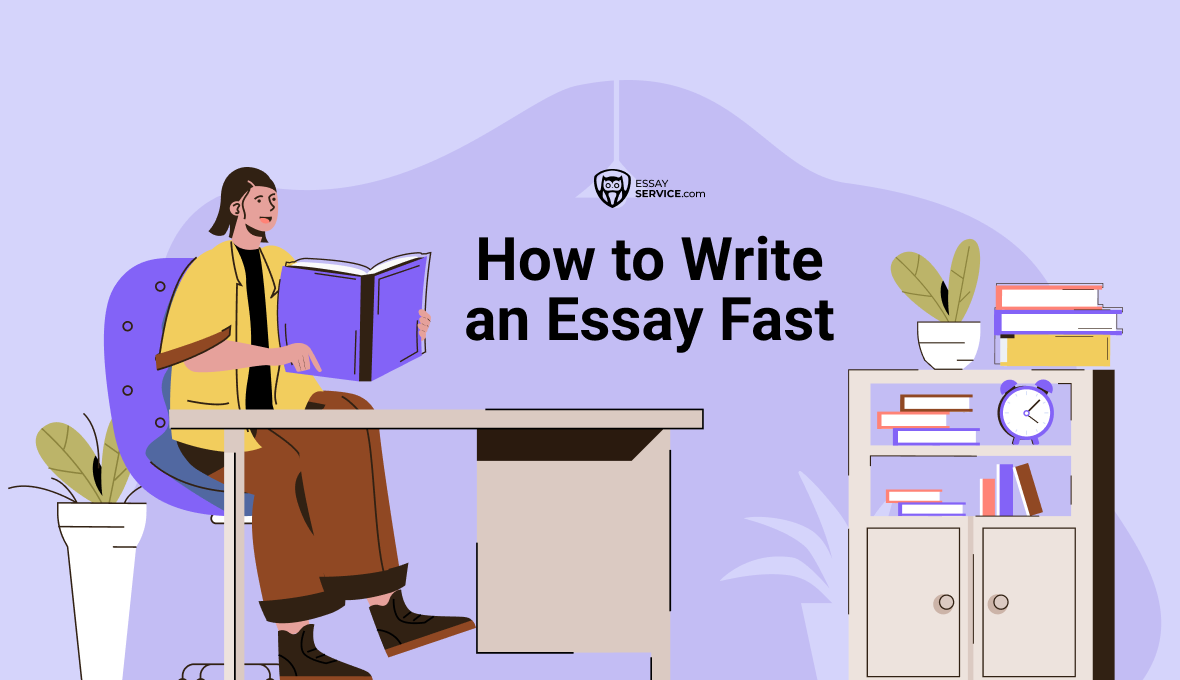
The Ultimate “Et Al.” Guide
There are some common Latin abbreviations you come across in writing like, e.g., i.e., and etc. Et al. is also a Latin abbreviation that is commonly found in academic documents, research papers, and bibliographies. If you have seen this abbreviation several times and have been wondering how it is used, this article is for you. EssayService essay writers invites you to learn about the et al. meaning, the correct punctuation, how to use it with different citation styles, etc.
As you approach the end of your high school years, it's prudent to look ahead and plan for the financial aspect of further education. So, as you delve into the nuances of academic language and prepare for the next step in your education, remember that a world of opportunities and financial support awaits the proactive student.
What Does Et Al. Mean?
Et al. is a Latin term that stands for ‘Et alia.’ Et alia means ‘in addition,’ or ‘and others.’ Directly translated, ‘et’ means ‘and’ and ‘alia’ means ‘others.’ Normally, et al. is used when you are stating a list of authors, and you do not want to mention all of them. This can either be because they are too many or the style being used has a set requirement on the number of authors you can mention. It should be noted that et al. should never be used in place of one author. It always stands for at least two more others. Here is an example:
Authors: John Watson, Sheldon Herbert, Kripke James, and Mary Catherine. (2009)
Citation example: Watson et al. (2009)
Using Et Al.: Correct Punctuation
Many rules direct the et al. usage, but first, you need to understand how to punctuate the term itself. When punctuating et al., ‘et’ isn’t followed by a period, but ‘al’ is always followed by a period. This is because ‘et’ isn’t an abbreviation but a complete Latin word while ‘al’ is the abbreviation of ‘alia.’
Here is a representation of the correct and wrong punctuation of et al.
Wrong: Et. al.; Et. al; Et al
Right: Et al.
Besides the punctuation of the term itself, there are some other punctuation rules for before and after the expression.
- When using et al. in a sentence, if it comes at the end of the sentence, you do not need an extra period. For example:
Each Greek god had its own powers, as shown by Watson et al.
- You can add a comma after the period that comes after the et al. if the sentence is continuing. For example:
(Watson et al., 2009)
- You can use a comma before et al. if you are using the Oxford comma. The Oxford comma is a pre-conjunction comma used when the list has more than two items. For example:
If you are using the Oxford comma, the citation is:
Watson, Herbert, et al.
If you are not using the Oxford comma, the citation becomes:
Watson, Herbert et al.
Et Al. vs. Etc.
Etc. is another Latin term that is an abbreviation of et cetera, which can be translated to mean and the rest. Just like et alia, it is used when the writer does not want to mention everything. However, there is one crucial difference between etc. and et al. Etc. is used when the extra items are things, concepts, or ideas, not people. Here is an example of the two for further clarification:
Ian bought mangoes, bananas, carrots, etc. from the market.
Men in that period ate fruits and roots, according to Jane et al.
Et Al. and Ambiguity
There are times when the documents being referenced have some similar authors. When writing citations for such documents, you may end up having ambiguous references. You may need to include authors up to the point where the references can be differentiated. Here is an example for further clarification:
You want to reference two books:
Pi by John Watson, Sheldon Herbert, Kripke James and Mary Catherine (2009)
Qi by John Watson, Sheldon Herbert, Maryann Jameson, George Anderson, and Joyce Smith (2009)
If you write the citation as Watson et al. 2009, the reader will not know which book you are referring to. In this case, you will write the citations as:
Watson, Herbert, James, and Catherine (2009)
Watson, Herbert, Jameson et al. (2009)
The reason the first citation does not have et al. is that after writing the third differentiating author, there is only one author left, and as was mentioned earlier, et al. has to stand for at least two authors.

Et Al. in APA Style
Different citation styles have different rules for writing the in-text citations and bibliography.
When writing in-text citations in APA format, here are the rules:
- If the text has one or two authors, you will mention them using their last names in the in-text citation as follows:
(Tribianni, 2016)
(Charles & Evans, 2015)
- If the text is authored by more than two authors, mention the last name of the first author plus et al. as follows:
(Watson et al., 2009)
- In previous versions of APA, if three to five people wrote the cited work, you listed their last names in the first citation then just the first author in the consequent citations. An example is as follows:
1st citation: (Watson, Herbert, Jameson, Anderson & Smith, 2009)
Subsequent citations: (Watson et al., 2009)
In APA format, the et al. usage in the reference list is not allowed. If the work has more than seven authors, you list the first six, add an ellipse, then list the final name as shown below:
John W., Mary K.., Susan J., Evans M., Kevin T., Peter W., … Hendricks O.
Et Al. in APA 7th Edition
Two things have changed in the 7th edition of APA format:
- You don’t list all the authors in the first citation unless the work has only two authors.
- You can list up to 20 authors in the reference list. If the number of authors exceeds 20, write the first 19, add an ellipse, then write the last author.
Et Al. in MLA Style
In MLA format, you use et al. both in the in-text citations and the works cited list. You use it when the number of authors exceeds three.
Here is an example of an MLA in-text citation and reference in the works cited:
In-text citation: (Watson, 15)
Works cited reference: Watson et al. Pi. 2009.
Et Al. in Chicago Style
Chicago style is a little different from the two styles above because writers can use footnotes, references, or in-text citations. In the Chicago Manual, you use et al. for works that have four or more authors. You use a footnote if your work does not have a bibliography at the end.
Here is how the citations will look like in each case when they have more than three authors:
- If writing in-text citations, here is how they will look like:
(Watson et al., 2009, 21-22)
- When writing footnotes:
1st mention: Watson et al., Pi (2009), 20-21
Subsequent mentions: Watson et al., Pi, 30-33
- When writing the bibliography:
Watson, John. Et al., Pi. 2009
Et Al. in Harvard Style
When citing using the Harvard style, you use et al. when the work has more than three authors. Just like with the other styles, you use the last name of the first author, followed by et al.
An example of a Harvard citation would be:
(Singh et al. 2015)
Et Alibi - Another Et Al.
Et al. can also, in some cases, stand for et alibi. An alibi is normally used in criminal investigations. It typically refers to where a suspect was at the time of the crime and is used as evidence to eliminate them from the suspect list. When et al. is used to mean et alibi, it can be translated to mean ‘and elsewhere.’ Where etc. means things or ideas, and et alia refers to people, et alibi refers to locations.
For example, you and your friends went for a tour around Kenya and are listing places you visited. Instead of mentioning all the places you went to, you can mention some of them then add et al. Here is an example:
We went to Maasai Mara, Fort Jesus, Nairobi National Park, et al. to look at Kenyan wildlife and major landmarks.
Et alibi can also be used to refer to locations that aren’t physical. Look at this example:
The author uses Swahili words (page 21 et al.) throughout the book.
In this example, the writer is referring to places in the book.
How to Use Et Al. – Guidelines
When you are writing work using references, our team recommends always citing your sources to avoid plagiarizing their work. In this case, you are using et al. formally and need to understand what referencing style is required for your paper. You can also use et al. informally, for example, in an email.
Using Et Al. Formally
Class assignments, research reports, and dissertations are examples of formal documents in which you would use et al. Besides mentioning authors, you could use et al. when you don’t want to mention all the characters. Here is an example of how to write et al. in both cases:
Using Et Al. With Authors
If Jim Antony, Jesse Kingsley, Jude Green, Sarah Hope, and Adam Groff write a book titled Ancient Gods of Greece, they can be mentioned as followed:
Antony et al. researched the different gods the ancient Greeks believed in.
Using Et Al. With Characters
Maybe you are writing a book summary for Harry Potter. You could write the following sentence:
Harry Potter et al. joined forces to fight He Who Must Not Be Named.
Using Et Al. Informally
Though not very common, you can use et al. informally in some situations. For example, if you are writing an email talking about a group of friends or coworkers, you may substitute some of their names for et al. if the list is too long and tedious to type out. For example:
Jenifer, Agnes et al. went to the museum over the weekend to learn about fossils.
When Not To Use Et Al.
There are some situations where using et al. may be inappropriate or misunderstood. Here are two such situations explained by EssayService writers:
In Everyday Speech
When talking to your friends or your coworkers, it may not be correct to use et al. Example:
Rather than say ‘Joy et al. went swimming in their neighbor’s pool.’ say, ‘Joy and her friends went swimming in her neighbor’s pool.’
When you want to avoid mentioning everyone, substitute et al. with everyday words like ‘and others’ or ‘and the rest.’
When Writing a Salutation
When starting a letter or an email that is directed to several people, do not use et al. in the salutation. For example:
Use: Greetings, or hello everyone
Don’t use: Dear Eunice et al.
To Sum Up
In this guide, you have learned about using et al. You now know that et al. is a Latin term, an abbreviation for et alia, which means ‘and others.’ You have also seen that some rules govern et al. usage. You have seen how different referencing styles use it in their in-text citations and bibliographies. Et al. is a great abbreviation because it saves you the tedious task of having to list down all the people who you want to mention.
If all this seems like a lot of work, you can always buy an essay and sit back and relax as competent writers write and cite for you.
Frequently asked questions
New posts to your inbox!
Your submission has been received!



.webp)